California Vaquero History
The background of the vaqueros, the lore, tradition and technique has become legendary around the world and has staked a popularity position over the last few years in the media - editors, photographers and film producers have rekindled their desire to explore, document and share their findings on the vaquero with eager audiences. The California vaquero history is one of special significance for it was the be beginning of the working cowboy we know today. It is the saga of the early Spanish and Mexican horsemen of California and their gringo pupils the buckeroos; the origin of the Great Basin buckaroo and an influence that traveled to Wyoming, Montana and further north into Alberta, Canada. The vaquero style still remains in practice today although some variations have been introduced, but many followers hold tight to the foundations of horsemanship in which the California vaquero excelled.
Vaquero culture was inherited from the Spanish cavalry, who adopted it from the Moorish Jinete which is thought to have come from the Orient, through Egypt, across the deserts of North Africa into Spain, spreading across the seas into North and South America. Early 1700's California was a vast yet-to-be discovered land. Infrequent expeditions by the Spanish to explore the Alta California coast by ship, finding harbors, brief contacts with coastal "tribes" eventually led them to launching an expedition in 1769 from Mexico into San Diego bringing horses, cattle and mules to the area. The intent was to establish a colony with missions governed by the Franciscan fathers. Of course, much history is documented from that point on as our California hertiage was forming (hostile encounters, uprisings, hide and tallow traders, 21 Missions, revolution, California statehood) but all during which the massive herds of cattle, horses, lifestock that grazed the lush land were under the mounted vaquero's watchful eye, skilled in the use of the rawhide riata for sorting, roping to brand, ear mark or when necessary slaughter.
The vaquero "culture" developed into a fine art in California through the Mission era, into the Rancho era (and beyond) by the Spanish, Indians, Mexicans, Gringos - men who upheld the vaquero traditions as in the centerfire saddle, rawhide riata, hackamore (jaquima), half-breed and spade bits. The best of the vaqueros were often referred to as "Californios". These men excelled in the art of making a horse as light and flexible to the rider's soft touch, as is said today...to work as "one".
The history, the horsemanship, the gear, the land, the lifestyle remains part of our heritage and is remembered, practiced and celebrated at various vaquero gatherings and shows throughout California each year. These events showcase the talents of artists, gear makers, silversmiths, historians and horsemen who carry on the tradition of the California vaquero.
See list of Recommended Books
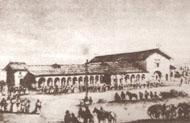 |
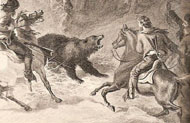 |
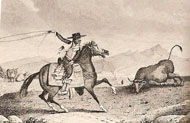 |
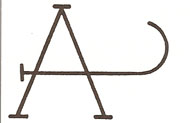 |
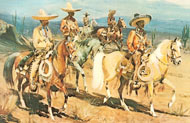 |
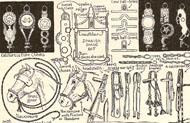 |
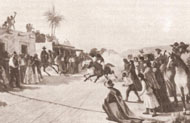 |
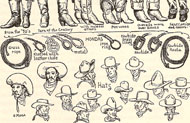 |
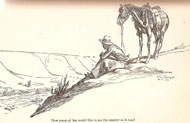 |
(Illustration credit Californios Jo Mora; West of the West R. Kirsch/W.S. Murphy; Edward Borein Cowboy Artist Harold G. Davidson; Cowboys North and South Will James; San Juan Bautista Charles W. Claugh)




